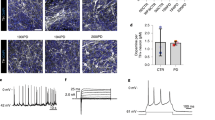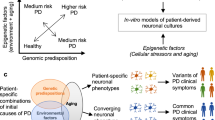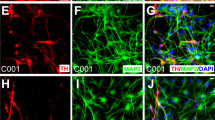Abstract
Patient-specific induced pluripotent stem cells (iPSCs) represent a novel system for modeling human genetic disease and could provide a source of cells for large-scale drug-discovery screens. Here we demonstrate the feasibility of performing a primary screen in neural crest precursors derived from iPSCs that were generated from individuals with familial dysautonomia (FD), a rare, fatal genetic disorder affecting neural crest lineages. We tested 6,912 small-molecule compounds and characterized eight that rescued expression of IKBKAP, the gene responsible for FD. One of the hits, SKF-86466, was found to induce IKBKAP transcription through modulation of intracellular cAMP levels and PKA-dependent CREB phosphorylation. SKF-86466 also rescued IKAP protein expression and the disease-specific loss of autonomic neuronal marker expression. Our data implicate alpha-2 adrenergic receptor activity in regulating IKBKAP expression and demonstrate that small-molecule discovery using an iPSC-based disease model can identify candidate drugs for potential therapeutic intervention.
This is a preview of subscription content, access via your institution
Access options
Subscribe to this journal
Receive 12 print issues and online access
$209.00 per year
only $17.42 per issue
Buy this article
- Purchase on Springer Link
- Instant access to full article PDF
Prices may be subject to local taxes which are calculated during checkout



Similar content being viewed by others
References
Hims, M.M. et al. Therapeutic potential and mechanism of kinetin as a treatment for the human splicing disease familial dysautonomia. J. Mol. Med. 85, 149–161 (2007).
Lee, G. et al. Modelling pathogenesis and treatment of familial dysautonomia using patient-specific iPSCs. Nature 461, 402–406 (2009).
Brennand, K.J. et al. Modelling schizophrenia using human induced pluripotent stem cells. Nature 473, 221–225 (2011).
Ebert, A.D. et al. Induced pluripotent stem cells from a spinal muscular atrophy patient. Nature 457, 277–280 (2009).
Itzhaki, I. et al. Modelling the long QT syndrome with induced pluripotent stem cells. Nature 471, 225–229 (2011).
Marchetto, M.C. et al. A model for neural development and treatment of Rett syndrome using human induced pluripotent stem cells. Cell 143, 527–539 (2010).
Moretti, A. et al. Patient-specific induced pluripotent stem-cell models for long-QT syndrome. N. Engl. J. Med. 363, 1397–1409 (2010).
Yazawa, M. et al. Using induced pluripotent stem cells to investigate cardiac phenotypes in Timothy syndrome. Nature 471, 230–234 (2011).
Yahata, N. et al. Anti-Abeta drug screening platform using human iPS cell-derived neurons for the treatment of Alzheimer's disease. PLoS One 6, e25788 (2011).
O'Brien, J., Wilson, I., Orton, T. & Pognan, F. Investigation of the Alamar Blue (resazurin) fluorescent dye for the assessment of mammalian cell cytotoxicity. Eur. J. Biochem. 267, 5421–5426 (2000).
Desbordes, S.C. et al. High-throughput screening assay for the identification of compounds regulating self-renewal and differentiation in human embryonic stem cells. Cell Stem Cell 2, 602–612 (2008).
Slaugenhaupt, S.A. et al. Rescue of a human mRNA splicing defect by the plant cytokinin kinetin. Hum. Mol. Genet. 13, 429–436 (2004).
Shum, D. et al. High-content assay to identify inhibitors of dengue virus infection. Assay Drug Dev. Technol. 8, 553–570 (2010).
Pauwels, P.J., Tardif, S., Wurch, T. & Colpaert, F.C. Facilitation of constitutive alpha(2A)-adrenoceptor activity by both single amino acid mutation (Thr(373)Lys) and g(alphao) protein coexpression: evidence for inverse agonism. J. Pharmacol. Exp. Ther. 292, 654–663 (2000).
Ooi, Y.H., Oh, D.J. & Rhee, D.J. Analysis of alpha2-adrenergic receptors and effect of brimonidine on matrix metalloproteinases and their inhibitors in human ciliary body. Invest. Ophthalmol. Vis. Sci. 50, 4237–4243 (2009).
Trendelenburg, A.U., Wahl, C.A. & Starke, K. Antagonists that differentiate between alpha 2A-and alpha 2D-adrenoceptors. Naunyn. Schmiedebergs Arch. Pharmacol. 353, 245–249 (1996).
Pfenning, A.R., Schwartz, R. & Barth, A.L. A comparative genomics approach to identifying the plasticity transcriptome. BMC Neurosci. 8, 20 (2007).
Chen, Y.T. et al. Loss of mouse Ikbkap, a subunit of elongator, leads to transcriptional deficits and embryonic lethality that can be rescued by human IKBKAP. Mol. Cell Biol. 29, 736–744 (2009).
Hims, M.M. et al. A humanized IKBKAP transgenic mouse models a tissue-specific human splicing defect. Genomics 90, 389–396 (2007).
Papapetrou, E.P. et al. Stoichiometric and temporal requirements of Oct4, Sox2, Klf4, and c-Myc expression for efficient human iPSC induction and differentiation. Proc. Natl. Acad. Sci. USA 106, 12759–12764 (2009).
Lee, G., Chambers, S.M., Tomishima, M.J. & Studer, L. Derivation of neural crest cells from human pluripotent stem cells. Nat. Protoc. 5, 688–701 (2010).
Rodriguez, L.G., Wu, X. & Guan, J.L. Wound-healing assay. Methods Mol. Biol. 294, 23–29 (2005).
Zhang, J.H., Chung, T.D. & Oldenburg, K.R. A Simple statistical parameter for use in evaluation and validation of high throughput screening assays. J. Biomol. Screen 4, 67–73 (1999).
Acknowledgements
We would like to thank members of the Studer lab for valuable discussions on the manuscript and the members of the HTS Core Facility for their help during the course of this study. We also thank J. Hendrikx and P. Anderson for technical help in flow cytometry assays. Work in the Studer lab was supported by grants from NYSTEM (L.S.) and Druckenmiller Fellowship from New York Stem Cell Foundation (G.L.). Robertson Investigator Award from New York Stem Cell Foundation (G.L.) and Maryland Stem Cell Research Funding (G.L.) supported experiments in the Lee lab. Work of the HTS Core Facility was supported by W.H. Goodwin and A. Goodwin and the Commonwealth Foundation for Cancer Research, the Experimental Therapeutics Center at MSKCC, the W.R. Hearst Fund in Experimental Therapeutics, the L.S. Wells Foundation, and by grant 5 P30 CA008748-44 from National Institutes of Health National Cancer Institute.
Author information
Authors and Affiliations
Contributions
G.L.: conception and study design, maintenance/differentiation/isolation/expansion of FD-hiPSCs and FD-NCs, data analysis, cellular/molecular assays for validation/confirmation, data assembly, analysis and interpretation, and writing manuscript; C.N.R.: study design, development of assay, performing screening, data analysis and writing of manuscript; C.R.: performing screening; B.B.: HTS data analysis; H.K., N.Z., B.L., Y.J.K., I.Y.C. and B.M.C.: cellular/molecular assays for validation/confirmation; H.D.: study design, data analysis, interpretation of HTS data and writing manuscript; L.S.: conception and study design, data analysis and interpretation, and writing manuscript.
Corresponding authors
Ethics declarations
Competing interests
The authors declare no competing financial interests.
Supplementary information
Supplementary Text and Figures
Supplementary Figures 1–8 and Supplementary Tables 1,2 (PDF 1630 kb)
Rights and permissions
About this article
Cite this article
Lee, G., Ramirez, C., Kim, H. et al. Large-scale screening using familial dysautonomia induced pluripotent stem cells identifies compounds that rescue IKBKAP expression. Nat Biotechnol 30, 1244–1248 (2012). https://doi.org/10.1038/nbt.2435
Received:
Accepted:
Published:
Issue Date:
DOI: https://doi.org/10.1038/nbt.2435
This article is cited by
-
Transfer learning for versatile and training free high content screening analyses
Scientific Reports (2023)
-
Focus on your locus with a massively parallel reporter assay
Journal of Neurodevelopmental Disorders (2022)
-
Norepinephrine transporter defects lead to sympathetic hyperactivity in Familial Dysautonomia models
Nature Communications (2022)
-
New insights into the epitranscriptomic control of pluripotent stem cell fate
Experimental & Molecular Medicine (2022)
-
Towards bridging the translational gap by improved modeling of human nociception in health and disease
Pflügers Archiv - European Journal of Physiology (2022)



